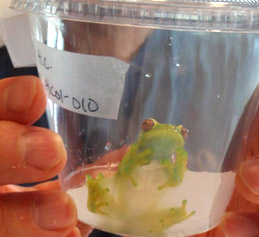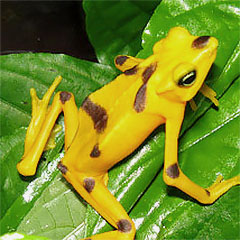After thriving for more than 360 million years, one third to one half of the world’s approximately known 6,000 amphibian species could go extinct in our lifetime. The amphibian crisis has been called “the biggest mass extinction in the environment since the dinosaurs."
Amphibians are severely affected by habitat loss, climate change, pollution and pesticides, introduced species, and over-collection as food and pets. While habitat loss is a major threat, the most acute threat is a fungal disease called chytridiomycosis, caused by a parasitic fungus known as amphibian chytrid. Throughout the past 30 to 40 years, this deadly disease has quickly spread to hundreds of amphibian species across the planet.
Chytrid is currently unstoppable and untreatable in the wild. In the environments where it thrives, the fungus can kill 80 percent of the native amphibians within months, leading to widespread amphibian extinctions.
Amphibians are very sensitive to changes in their environment and are among the first species to be affected by environmental stressors. They depend very heavily on environmental quality and water quality.
The decline of amphibian populations in the wild serves as a potent warning to other species, including humans. All ecosystems are incredibly interconnected and the disappearance of amphibians can have grave effects.




